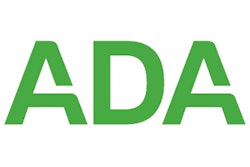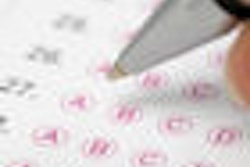
In what is being hailed as yet another landmark decision in Minnesota, the state dental board has unanimously voted to adopt the Canadian dental exam, making it the first state in the U.S. to endorse nonpatient-based licensure exams for dentists.
The role of live patient-based exams as part of the dental licensure testing process has been debated in the U.S. for years. Proponents say it is the only way to truly appraise a dental graduate's clinical competency, while opponents say there are serious ethical issues associated with this part of the testing process.
“I think you will see other states start to recognize the wisdom of these decisions.”
— Marshall Shragg, executive director,
Minnesota Board of Dentistry
In conjunction with the board's decision on June 26, the University of Minnesota School of Dentistry -- the only dental school in Minnesota -- announced that it will offer the National Dental Examining Board (NDEB) of Canada's two-part exam, which comprises a written test and a nonpatient-based Objective Structured Clinical Examination (OSCE), to its 2010 graduates next spring.
Minnesota also requires that licensure candidates graduate from a dental school accredited by the Commission on Dental Accreditation (CODA), successfully complete part I and II of the National Board Dental Examination, and pass the Minnesota jurisprudence examination.
Patrick Lloyd, D.D.S., M.S., dean of the University of Minnesota School of Dentistry, said that the OSCE effectively tests the decision-making ability of dental school graduates in a manner consistent with the ethical principles of the ADA and the dental profession.
"Minnesota has for a long time accepted the Canadian OSCE as a condition of initial licensure for those graduating from CODA-accredited Canadian schools," said Marshall Shragg, executive director of the Minnesota Board of Dentistry. "So the University of Minnesota was looking at a number of issues -- mostly ethical -- with regard to patient-based clinical exams."
In the process, Dr. Lloyd approached the state dental board to suggest the creation of a task force to study the situation and review the OSCE approach used in Canada. After seeing a demonstration of the OSCE in June, the task force made its recommendations to the dental board, which unanimously voted to adopt it as the new testing standard, according to Dr. Lloyd.
"This is categorically a landmark decision that is in the best interest of the public," he told DrBicuspid.com. "I am pleased to be in a state that is as progressive as ours and that has expressed an interest in trying to determine a method that better tests the intellectual competency and decision-making ability of our graduates."
The issue has national significance as well.
"There was a sense in the room [during the dental board vote] that this is one of those things that Minnesota is taking leadership in," Shragg said. "But I think you will see other states start to recognize the wisdom of these decisions."
Ethical concerns
|
How the OSCE works The Objective Structured Clinical Examination (OSCE) now used in Canada -- the same approach that will be offered in Minnesota starting next year -- eliminates the use of live patient exams. Rather, in addition to a written test, the exam features 25 different stations where the person taking the test is presented with a patient situation involving radiographs, intraoral images, and other diagnostic and patient-based information, explained Dick Diercks, executive director of the Minnesota Dental Association (MDA). The person is then required to give a careful diagnosis of the patient and make treatment recommendations. "This is real-life decision-making, and you'd better know what you are talking about," he said, adding that the MDA participated in a demonstration of the Canadian OSCE exam and "strongly supports going in this direction." For more on the OSCE exam and how it works, visit the National Dental Examining Board of Canada's Web site. |
Shragg may not be far off in his predictions. The validity and reliability of patient-based exams have been debated at the state and national level for years. In April, the ADA re-affirmed its 2005 resolution calling for eliminating human subjects from dental licensure exams. The Minnesota Dental Association (MDA) has had a similar resolution in its house of delegates going back to 2001, according to Dick Diercks, executive director of the MDA. And the American Dental Education Association (ADEA) and most dental schools have been fighting the requirement of live patient examinations "for a long time," according to Frank Catalanotto, D.M.D., a professor and chair of the department of community dentistry and behavioral sciences at the University of Florida College of Dentistry.
In 2001, the American Association of Dental Examiners -- with the support of the regional testing boards -- issued a 19-page position paper on the use of human subjects in dental licensure exams, concluding in part that, "The time may come, as technology evolves, when clinical simulation utilizing a new generation of manikins and other computer-based methodologies will provide a viable alternative to the use of patients in licensure examinations. The dental and dental hygiene licensing community does not believe that time has arrived, and that no mandates can alter that fact."
Eight years later, the debate centers more on ethical than technological issues. A study in the Journal of Dental Education (April 2008, Vol. 72:4, pp. 408-421) noted that:
Clinical licensure exams conducted on human subjects have been criticized as both unethical and unreliable. They are considered unethical because the requirement for students to perform a specified list of procedures creates a setting in which patients may be subjected to irreversible and possibly unnecessary procedures. Furthermore, clinical licensure exams have been shown to be unreliable because of the lack of concordance between the results of the clinical exam and other accepted measures of student competency, such as overall grade point average, National Board scores, class rank, and overall performance in schools as measured by faculty. It is not uncommon for students who have been deemed competent by their faculty to fail their clinical licensure examination.
An analysis of the contribution of a patient-based component to the clinical licensure exam in Canada noted that the lack of utility and the associated costs and ethical concerns prompted the National Dental Examining Board to eliminate the patient-based component of the exam, ultimately replacing it with the OSCE approach (Journal of the American Dental Association, October 2006, Vol. 137:10, pp. 1434-1439).
The OSCE is "a proven test of decision-making ability that avoids some of the ethical problems associated with a traditional patient-based examination," Dr. Lloyd said. "There are a number of criteria the ADA has promulgated that define what an ethically based patient exam is, and the existing formats don't allow conformance to those standards."
For example, according to ADA policy, patients should not be compensated beyond their expenses associated with participating in the exams. "But there is evidence that they are, and I think this clouds the decision-making process," Dr. Lloyd said.
Other ethical issues related to patient-based exams include:
- The potential for premature treatment
- Diagnosed treatment needs that are deferred until the exam date
- Treatments rendered out of sequence
- Patients cared for by a provider who is not the provider of record
- Follow-up care that is not offered by the provider of record
In addition, the live patient clinical exam has no predictability, validity, or reliability, Dr. Catalanotto said. There are also concerns that advances in preventive dentistry are not being taken into consideration.
"They are having students restore carious lesions that with today's science and knowledge we would try to remineralize before we would restore," he said.
Looking ahead, Dr. Catalanotto, Dr. Lloyd, and many others are hopeful that the precedent set by Minnesota will prompt other states and dental schools to follow suit. Some even anticipate that the U.S. may again follow Canada's lead and adopt a national dental exam.
"The ADA promotes the use of a national exam, and we're almost there," Dr. Catalanotto said. "That's what a lot of us are hoping for: moving toward an exam that will provide better mobility for graduates to move around the country."
Copyright © 2009 DrBicuspid.com



















